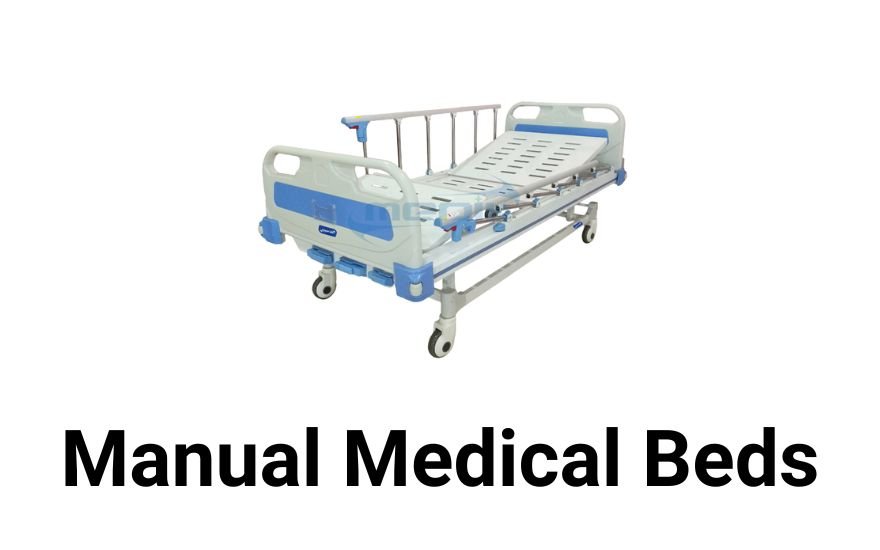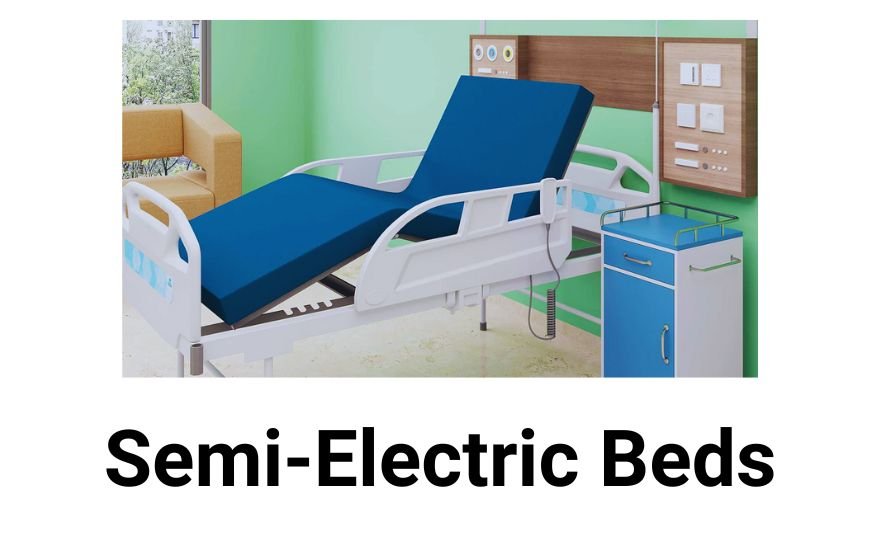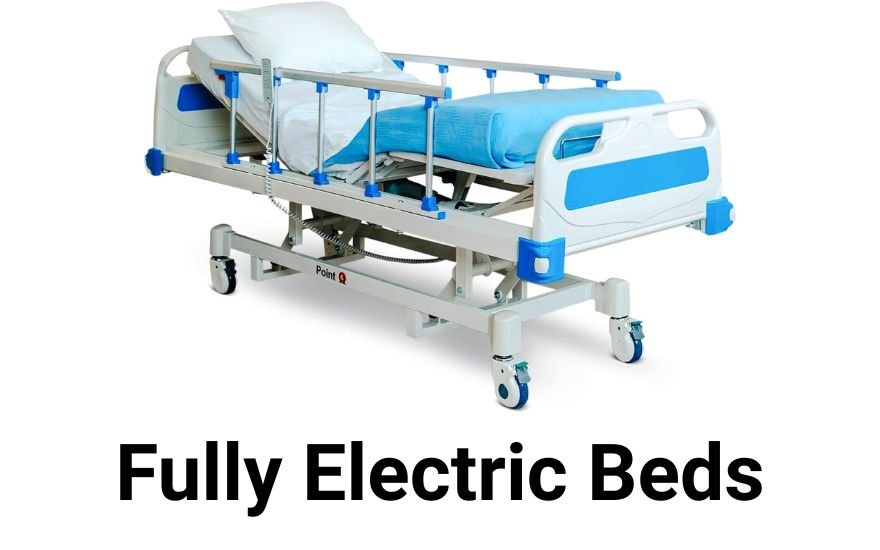Hospital Bed for Patient in Bangladesh: A Complete Guide

Imagine being unwell and confined to bed for days, weeks, or even months. Now imagine that bed not supporting your back, not adjusting when you need to sit up, or making it harder for your family or nurses to take care of you. That’s why choosing the right hospital bed for a patient in Bangladesh is more than just a technical or budget decision—it’s about dignity, recovery, and comfort.
In recent years, Bangladesh’s healthcare system has evolved rapidly. From top-tier hospitals in Dhaka to small clinics in villages, the demand for different types of medical beds is increasing. Whether you’re a family caregiver buying a home care bed, or a hospital administrator outfitting an ICU, the choice of bed can significantly affect patient outcomes.
Detailed information about all beds is provided below and you can see medical bed price list by visiting the Bdstall website.
Manual Medical Beds: A Lifesaver for Basic Care

Manual hospital beds are still the backbone of general care wards across Bangladesh. Why? Because they’re reliable, affordable, and easy to use—even in places where electricity might be an issue.
These beds are best for patients with stable conditions. Think of someone recovering from dengue, a minor fracture, or postnatal care in a rural hospital. They work perfectly for short-term recovery or low-risk, non-critical patients.
Here’s why these beds are still widely used in 2025:
-
Cost-effective: Prices range between BDT 22,000 to BDT 53,000, depending on features.
-
Simple mechanisms: They come with 2 or 3 cranks to raise the back or legs.
-
Low maintenance: Ideal for facilities with limited technical staff.
-
Perfect for rural setups: Especially in government hospitals outside Dhaka, where budget constraints are tight.
We spoke to a nurse at a district hospital in Mymensingh. She said, “Manual beds are easy to manage, and the crank is straightforward. Even our interns get it right on the first try.”
So if you’re buying for a small clinic or for a patient who can still move with help, this is the bed you want.
Semi-Electric Beds: The Best of Both Worlds

Let’s say your patient needs more comfort but doesn’t require round-the-clock ICU-level care. A semi-electric bed is your go-to.
These beds have electric adjustment for the head and foot sections, but you adjust the bed height manually. That’s ideal for patients with limited mobility, those recovering from stroke, or anyone who needs regular positional changes.
Why semi-electric beds are growing in popularity in 2025:
-
Perfect for intermediate care.
-
Easy for caregivers to operate using buttons.
-
Great for home use or private hospitals.
-
Less expensive than full electric beds, ranging from BDT 50,000 to BDT 80,000.
A family caregiver from Sylhet shared her experience: “We bought a semi-electric bed for my father after his hip surgery. It helped him sit up easily without us lifting him each time.”
Here’s a quick breakdown:
| Feature | Manual Bed | Semi-Electric Bed |
|---|---|---|
| Head/Foot Elevation | Manual | Electric |
| Bed Height Adjustment | Manual | Manual |
| Average Price (2025) | 22k–53k BDT | 50k–80k BDT |
| Suitable For | Stable patients | Moderate recovery needs |
These beds offer balance—more comfort than manual beds, and more affordable than ICU models.
Fully Electric Beds: Comfort Meets Critical Care

If your loved one is in critical condition, immobile, or needs frequent position changes, a fully electric bed is not optional—it’s essential.
These beds are found in ICUs, private rooms, and rehabilitation centers across Bangladesh. With motorized controls for head, foot, and height adjustments, these beds allow for precise patient positioning without physical effort from caregivers.
Here’s when a fully electric bed is the right choice:
-
Patients with paralysis or spinal injuries.
-
Cancer patients undergoing long-term treatment.
-
Individuals with cardiovascular issues needing Trendelenburg positioning.
-
Post-operative recovery from major surgeries.
Prices in Bangladesh vary from BDT 80,000 to BDT 150,000+, depending on added features like side rails, battery backup, and digital panels.
One caregiver at a Dhaka ICU said, “Our patients with ventilators rely heavily on these beds. It helps prevent bedsores and makes feeding and cleaning so much easier.”
These beds reduce human error, improve hygiene, and enhance recovery speed, especially for patients who can’t move themselves at all.
Specialized ICU Beds: Life Support Starts Here
ICU patients need precision, monitoring, and adjustability. And that’s exactly what specialized ICU beds deliver. In Bangladesh’s tertiary hospitals, these beds are crucial in saving lives.
Unlike regular electric beds, ICU beds are designed to support multi-organ failure, life support machines, and constant monitoring. They integrate with oxygen supply, heart monitors, and even weighing systems.
Typical features in an ICU bed include:
-
Cardiac chair positioning
-
CPR quick-release
-
Trendelenburg/reverse Trendelenburg tilt
-
Integrated monitor support
-
Advanced control panel
Prices begin at around BDT 117,000 and can go up to BDT 200,000 or more for premium ICU beds.
Hospitals in Chittagong and Rajshahi are investing in these beds to meet the rising demand for advanced critical care. Doctors in these hospitals agree that equipment quality directly impacts survival chances.
So if you’re in charge of an ICU or building a critical care unit, ICU beds are non-negotiable. They’re a lifeline, not a luxury.
Bariatric Beds: The Future of Inclusive Healthcare
With rising obesity rates in urban centers like Dhaka and Khulna, bariatric beds are no longer a niche product—they’re a necessity.
These beds are designed for patients weighing over 150 kg, providing extra width, strength, and stability. Ordinary beds simply don’t offer the space or safety needed.
Why bariatric beds are critical in Bangladesh now:
-
Support weight up to 400–500 kg.
-
Stronger frames prevent collapse or tipping.
-
Wider surface ensures dignity and comfort.
-
Useful for post-surgical care in obese patients.
While prices can soar to over BDT 500,000, especially for fully electric bariatric beds, they are worth the investment in specialty clinics and private hospitals.
As one orthopedic specialist said: “We had a case where we couldn’t use standard equipment for a patient over 180 kg. After we got a bariatric bed, treatment became easier and safer.”
Bariatric beds promote inclusivity in healthcare. Everyone deserves proper care—regardless of body size.
Bariatric Beds: A Safe Solution for Obese Patients
With lifestyle diseases on the rise, obesity is becoming increasingly common in urban parts of Bangladesh like Dhaka and Chittagong. That’s where bariatric hospital beds step in. These are specially engineered for heavier individuals, typically supporting weights above 150 kg. Unlike standard beds, bariatric beds are wider, sturdier, and built with reinforced steel frames to ensure both comfort and safety for obese patients.
These beds aren’t just about weight—they offer dignity and support. I remember a close relative admitted to a private clinic in Dhaka. He was well over 160 kg and felt incredibly insecure in a regular hospital bed. It was only after being shifted to a bariatric bed that he felt truly safe and comfortable. The wider sleeping surface, the high-density mattress, and electric motor-assisted adjustments made a world of difference in his recovery.
What makes bariatric beds valuable is not just the design, but the way they make care more manageable. Caregivers can move, clean, and treat patients with less strain, and the patients experience better sleep and less pain. These beds often come with features like battery backup, multiple positioning options, and advanced support rails.
However, they are expensive—some can cost over BDT 500,000. For hospitals serving a growing number of bariatric patients, this is an essential investment. Suppliers like Bdstall offer a range of bariatric beds in Bangladesh, including options with extra padding, remote control features, and side access for caregivers.
Home Care Beds: Bringing Hospital Comfort to Your Doorstep
Not all patients need to stay in a hospital. Many people in Bangladesh prefer home care—especially in the later stages of life or after surgery. That’s where home care medical beds shine. They are designed for residential use, blending the comfort of a bed with the functionality of a hospital setup.
Think about elderly parents who need long-term care. A family in Sylhet recently shared their story online about their bedridden grandmother. They couldn’t keep her at the hospital due to emotional and financial concerns. They purchased a semi-electric hospital bed for home, and it changed everything. She could eat, sleep, and move better, and caregivers had a much easier time.
These hospital beds for patients in Bangladesh are made with compact designs, softer aesthetics, and silent motors. Most come with essential features like adjustable head/foot positions, side rails, and lockable wheels. Prices vary depending on the model, but a good home care bed starts at BDT 40,000 and can go up depending on features.
Families should always consider the layout of their home before buying. Is the doorway wide enough? Is there enough space to rotate the bed? Remember, functionality at home doesn’t have to sacrifice aesthetics or comfort.
What to Look for Before Buying a Hospital Bed?
If you’re looking to buy a hospital bed for patient in Bangladesh, here are a few key points to keep in mind:
-
Type of Patient: Know whether the patient needs basic care, critical care, or specialized rehabilitation.
-
Adjustability: Beds should allow head, leg, and height adjustments for flexibility and comfort.
-
Weight Capacity: Ensure the bed supports the patient’s weight, especially for bariatric care.
-
Mobility: Choose beds with lockable wheels for easy transport and safety.
-
Side Rails: These are crucial for preventing falls, especially for elderly or unconscious patients.
-
Mattress Type: Orthopedic and anti-bedsore mattresses are essential for long-term use.
-
Budget: Don’t just go for the cheapest; evaluate value for money in terms of features and durability.
-
Warranty & Support: Look for suppliers that offer after-sales service and technical support.
Benefits of Hospital Beds: Why They Matter
Hospital beds do more than offer a place to lie down—they change the recovery experience. Here’s why they’re essential:
-
Better Healing: Adjustable positions can enhance blood flow, reduce pressure ulcers, and speed up recovery.
-
Patient Comfort: A comfortable bed can ease stress, pain, and anxiety.
-
Support for Caregivers: Easy adjustability reduces the physical burden on nurses or family caregivers.
-
Safety Features: Side rails, emergency CPR modes, and sturdy frames prevent accidents.
-
Flexibility: Some beds offer Trendelenburg and anti-Trendelenburg functions for circulatory and respiratory therapy.
Hospital Bed Price Table in Bangladesh
| Bed Type | Features | Price Range (BDT) |
|---|---|---|
| Manual Bed (2 or 3 Crank) | Adjustable back & leg rest | 22,000 – 53,000 |
| Semi-Electric Bed | Electric head & foot, manual height | 50,000 – 80,000 |
| Fully Electric Bed | Full electric control, ICU-friendly | 80,000 – 150,000+ |
| ICU Bed | 5-function, life support integration | 117,000 – 200,000+ |
| Bariatric Bed | High weight capacity, wide frame | 150,000 – 500,000+ |
| Home Care Bed | Electric or manual, compact design | 30,000 – 100,000 |
| Birthing Bed | Designed for labor and delivery | From 15,000 |
Types and Features of Hospital Beds
In Bangladesh, medical beds are available in various styles:
-
General Care Beds – For routine admissions and short-term stays.
-
Rehabilitation Beds – For post-operative care and therapy.
-
Critical Care Beds – With life-saving integrations.
-
Home Use Beds – Simplified for family settings.
And their key features include:
-
Motorized Adjustments
-
Ergonomic Design
-
Side Rails & Safety Locks
-
High-tech Monitoring (in ICU Beds)
-
Anti-bedsore Mattress Support
-
Cardiac Chair Function (in ICU beds)
Hospital Bed Buying in Bangladesh: The Final Word
Buying a hospital bed for patient in Bangladesh is not just a purchase—it’s a long-term investment in health and dignity. Whether you’re equipping a hospital ward, caring for a loved one at home, or setting up an ICU unit, the right bed improves both care delivery and patient experience.
Consider the bed not just by price, but by its ability to meet the real needs of the patient. With options ranging from manual beds for rural clinics to ICU beds for advanced care in major hospitals, the healthcare system in Bangladesh is evolving fast.
Suppliers like Bdstall have made it easier than ever to compare features, read reviews, and explore hospital bed prices in one place. The goal is simple: provide safe, affordable, and appropriate care for every patient—whether in a hospital, clinic, or home.
Frequently Asked Questions (FAQs)
1. What is the best hospital bed for elderly patients in Bangladesh?
For elderly patients with limited mobility, a semi-electric or fully electric bed is ideal for ease of use and comfort.
2. Where can I find the best hospital bed price in Bangladesh for 2025?
Check trusted platforms like Bdstall, which offer updated price lists and feature comparisons.
3. Can I rent a hospital bed in Dhaka?
Yes, hospital bed rental is available in Dhaka, starting at around BDT 300 per day, especially for short-term recovery.
4. Are hospital beds covered by health insurance in Bangladesh?
Typically, they are not. Most beds are purchased or rented privately, though some NGOs may assist in certain cases.
5. Do hospital beds come with mattresses?
Many beds include basic mattresses, but anti-bedsore or orthopedic mattresses may be sold separately.
6. Is it worth buying a used hospital bed in Bangladesh?
If you’re on a tight budget, used beds can be a good option. Just ensure they are structurally sound and hygienic.
7. How long do hospital beds last?
With proper maintenance, a quality hospital bed can last 5–10 years or more.
8. What is the difference between ICU beds and normal hospital beds?
ICU beds have advanced life support, cardiac chair functions, and emergency settings, while general beds are for stable patients.
For more stay with us.
